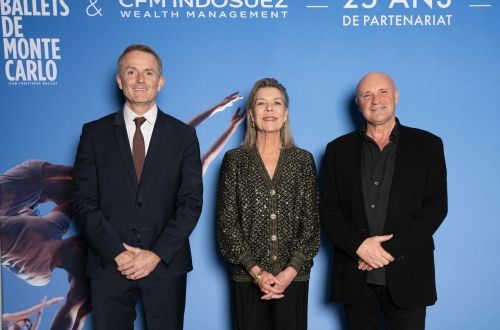Smart Cities: the technology behind smart and sustainable cities
Safer, more efficient, more sustainable, more egalitarian, more participatory and above all more connected, smart cities are quite a challenge. Gordon Falconer, Head of Smart Cities at GMR India, was Indosuez Wealth Management’s guest on 10th February 2022 to shed light on this topic in a dedicated virtual conference, together with Vincent Manuel, Indosuez Wealth Management CIO.
These complex systems built to solve today's problems and meet tomorrow's challenges are a concentration of the commitment and innovation dynamics of multiple industries. As such, they are not only one of the solutions to global warming but also present a unique long-term investment opportunity.
From eco-city to smart city
According to Gordon Falconer, there are over 700 definitions of the concept of Smart Cities, born in the early 2010s with the construction of the Masdar Eco-City in the Emirate of Abu Dhabi. Nevertheless, for this former real estate developer who has devoted his career for many years to smart cities across all continents, "it is about doing more with less thanks to new technologies". Tech can reduce costs, improve efficiency and extend the life of building materials, which he believes helps to create smart and innovative cities. Technology businesses of all sizes have taken up the concept that has evolved from a futuristic city to an innovative city, sometimes with revolutionary technologies promoting mobility, connectivity, the circular economy, etc.
A multiple concept
Gordon Falconer underlines that measuring the intelligence of a city is impossible given the number of existing indicators. However, he believes that smart cities are those that make strong commitments and have embarked on a process of transformation and improvement of their performance. There are many examples, including Barcelona, Amsterdam and Singapore, which has created the concept of a smart nation by setting up a dedicated agency.
He distinguishes between cities that are created from scratch, particularly in emerging regions, and those that exist in Europe, the United States and Australia. The latter combine a sophisticated bottom-up and top-down approach to smart transformation, which means that the initiative comes not only from the city itself but also from supranational authorities such as the European Union through financial incentives, for example.
In emerging areas, he emphasised that financial resources are less available, so the approach is more top-down.
In all cases, the stakeholders are so diverse – policy makers, landowners, authorities, the private sector, the public sector, investors, etc. – that it is difficult for them to cooperate, especially as smart cities operate horizontally. Generally speaking, infrastructures, networks, transport, services, administrations, etc. operate vertically, which makes it difficult to fit them into a horizontal scheme, particularly in the federal states.
Smart cities are therefore very different depending on the authority of the mayor, the remit of the various jurisdictions, etc., with the only common point being the ambition to function better with less through the use of new tech.
As early as 2014, the definition of the connected city given by the European Parliament in its report "Mapping Smart cities in the EU" was quite clear:
"A city seeking to address public issues via ICT-based solutions on the basis of a multi-stakeholder, municipally based partnership".
Sustainable development as a goal, social inclusion as a model
The energy and ecological transition, decarbonisation commitments, ageing infrastructure, pressure from urban housing demand... are all reasons that lead cities to build a roadmap to increase their intelligence. Gordon Falconer analysed the sustainability goals of many cities around the world before concluding that many of them were common. This is the case, for example, of Monaco and New Delhi, who share about 70% of their objectives centred on improving air quality, waste management, mobility, etc.
Furthermore, while the smart city undoubtedly contributes to social well-being, the question of social inclusion arises. Gordon Falconer believes that an intelligent city can be a source of inspiration for a whole country, a sort of showcase or model towards which all these cities could strive. It is attractive, it appeals and thus creates wealth with the declared desire to take part in social inclusion.
The Covid-19 pandemic has served as an accelerator to act differently and build a more sociable, more resilient, but also more resistant and more human city.
With the spread of telework, e-health, e-education, etc., the need for adaptability has further increased the use of technology and connectivity in all urban centres.
The role of technology companies
According to Gordon Falconer, the technological evolution of smart cities is based on a systems approach and is part of a broad ecosystem. In a centrifugal movement, companies propose their innovative ideas to local and then regional and federal authorities. The approach varies by region, regulatory structure, governmental and regional structure...
The market is considerable and the fields of application multiple, given the needs of infrastructure improvement or replacement, energy sobriety, circular economy, waste management, data processing. Technological intelligence is a means and not an end to achieve a smart city, which requires substantial funding.
Many companies, especially start-ups, are positioning themselves in the growth sectors of connectivity, traffic, security, soft mobility, energy, water management, urban planning, etc., as are the university research centres and schools that are sometimes based in the heart of these smart cities. These are all opportunities for investors and private equity professionals to participate in the changes that are taking place and to be able to measure the impact produced in concrete terms.
For example, according to a 2018 McKinsey study (Smart cities: Digital solutions for a liveable future), a smart and connected city could reduce the number of criminal incidents by 30 to 40%, save each person 15 to 30 minutes of daily travel time, save 25 to 80 litres of water per person per day and save 30 to 100 lives each year in a city of more than 5 million inhabitants.
February 18, 2022




